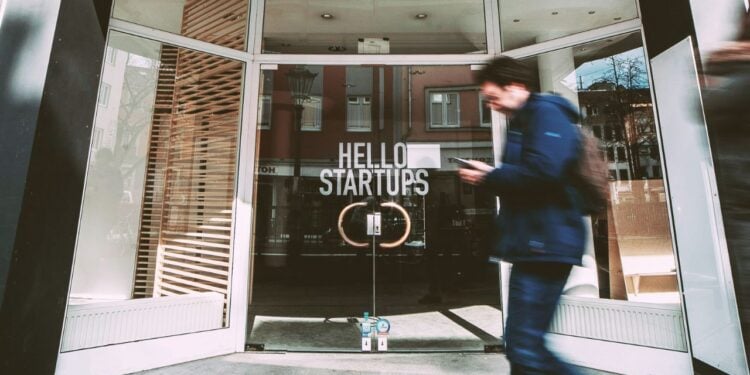- AI is transforming coworking operations, enhancing sales, analytics, and member experiences, pushing the industry toward more personalized, data-driven services.
- Despite headlines about office returns, corporations are increasingly turning to coworking for hybrid work solutions, driving significant demand for flexible, hospitality-driven spaces.
- Niche coworking spaces catering to specialized industries like Med-Tech or fashion are on the rise, fostering collaboration and networking within specific sectors, fueling growth and innovation.
This article was written by Liz Elam for Work Design Magazine.
When I sat down to write last year’s coworking Megatrends report, I wasn’t using AI at all. Today, AI is an integral part of my workflow.
Naturally, I decided to revisit the 2024 Megatrends by loading it into ChatGPT to assess how well the predictions held up. Spoiler alert: many came true.
Here’s what AI concluded about the key trends I identified last year:
- WeWork’s Bankruptcy: WeWork filed for bankruptcy, as expected. This event underscores the critical importance of sustainable business models in our industry.
- Shift to Hospitality: Coworking operators have embraced a hospitality-centric approach, prioritizing exceptional service and community building — just as predicted.
- Nomenclature Evolution: The term “flex office” gained traction but sparked debates about losing the essence of “coworking.”
- Real Estate Reckoning 3.0: Landlords are increasingly recognizing the value of flexible workspaces, leading to more collaborative partnerships with coworking operators.
The coworking industry continues to evolve rapidly, but some key trends and challenges remain constants.
A Brief History of the Wave
Back in 2012, at the very first GCUC, I presented a wave graphic illustrating coworking’s early, flat growth stage. That wave spiked when WeWork crashed onto the scene, only to plateau with its eventual struggles and bankruptcy.
Enter Anant Yardi, an unlikely white knight from the tech world, who stepped in with a $400 million investment to take a controlling interest in WeWork. Despite skepticism, including from his own team, Yardi is determined to turn the company around.
IF the stars align (interest rates go down, less global uncertainty and WeWork turns profitable) we can start paddling out to catch an even bigger wave…
The Myths That Hold Us Back
Let’s tackle some persistent misunderstandings:
- “Coworking is just for startups, tech and small businesses.”
Wrong. Our fastest-growing segment is corporate clients as they embrace hybrid and remote work. - “Coworking is just open floor plans.”
Nope. We’ve offered private offices and customizable spaces since the beginning. - “Coworking operators aren’t profitable.”
False. Operators like Industrious and Convene prove you can succeed in this space, even if margins aren’t sky-high. - “Coworking spaces aren’t able to raise money.”
Not true. Look at Uncommon, Workbox and Switchyards to name a few that raised money in 2024.
2025 Megatrends: The next renaissance of coworking is coming. Are you ready?
-
Nomenclature Matters
The word “flex” may communicate flexibility, but it’s a branding and SEO nightmare. It’s too broad, muddling data collection and making it harder to attract investment. The term “coworking” better captures our focus on community and collaboration and a total win SEO wise.
-
AI: Transforming the Industry
AI is no longer futuristic; it’s here, reshaping operations.
Companies like Uniti and Flexspace AI are leading the charge, improving sales processes and unlocking advanced analytics.
Expect AI to drive data-driven personalization and for AI to streamline the member experience freeing up more time to focus on a more human hospitality experience.
-
The Rise of Niches
Niche spaces are making a comeback, whether for Med-Tech, fashion, or climate-focused companies. These hyper-specialized spaces foster networking and collaboration within industries. It would be interesting to see alignment between “type of issues” as well (as suggested by my friend Antony Slumbers.) — supply chain or data security or customer experience.
-
Hospitality at the Core
If you haven’t read Unreasonable Hospitality by Will Guidara, you’re behind. Hospitality is no longer a buzzword — it’s the backbone of coworking. While real estate is essential, the member experience defines success and our industry.
-
Corporate Demand is Booming
Despite the “return to office” headlines, corporations are doubling down on coworking as a solution for hybrid work. Bravo to the aggregators that are educating corporate HR and workplace executives on the benefits of working from coworking spaces. This is only the tip of the iceberg of demand.
-
The Space Mix Debate
Do you need open layouts, private offices, or suites? Yes—to all of it. The mix depends on the city and client base. Be ready to adapt to corporate demands for flexibility and customization.
-
Consolidation: Not Quite Yet
While consolidation looms, it won’t happen until investment flows freely again. When WeWork stabilizes and interest rates drop, expect major industry shifts.The coworking landscape is ripe for tech-driven partnerships (think more of providers to coworking) and acquisitions, signaling a new phase of innovation and efficiency.
-
The Real Estate Reckoning Continues
The feared collapse of regional banks didn’t materialize, but the U.S. real estate market is undergoing a transformation. While office-to-housing conversions aren’t a widespread solution, opportunities to envision our cities and towers into mini innovation districts are starting to really gain traction. As I mentioned last year, this opens to the door to innovations – a great example – Stuf Storage. Taking underutilized space and using it for functional storage.
-
Brand Matters More Than Ever
In the coworking landscape, brand has evolved beyond logos and color schemes — it’s about creating a hospitality-driven experience that fosters belonging and aligns with members’ values and aspirations. A strong, purpose-driven brand evokes authenticity and pride, making members feel part of something larger than themselves. A good indicator of this trend is the rise of billboard ads for coworking brands.
-
The On Repeat List
These priorities remain non-negotiable:
The younger generation demands action on these fronts. Ignore them at your peril.
A Glimpse of Hope
- WeWork’s Re-birth: I believe WeWork could achieve profitability in 2025. Their decision to open WeWork’s platform to outside partners is a game-changer, fostering collaboration and innovation across the industry.
- Investment Resurgence: As interest rates decline and the U.S. elections settle, we’ll see the return of capital, enabling long-awaited consolidations and growth.
- Corporate Demand: Workers need third places to work. They’re discovering coworking and loving it.
Conclusion
The coworking industry is at a crossroads. While challenges remain, there’s immense potential for growth and reinvention. WeWork’s turnaround could catalyze a new era, and AI will drive unprecedented innovation. It’s time to double down on hospitality, refocus on the term “coworking,” and future-proof your business.
The next renaissance of coworking is coming.


 Dr. Gleb Tsipursky – The Office Whisperer
Dr. Gleb Tsipursky – The Office Whisperer Nirit Cohen – WorkFutures
Nirit Cohen – WorkFutures Angela Howard – Culture Expert
Angela Howard – Culture Expert Drew Jones – Design & Innovation
Drew Jones – Design & Innovation Jonathan Price – CRE & Flex Expert
Jonathan Price – CRE & Flex Expert














